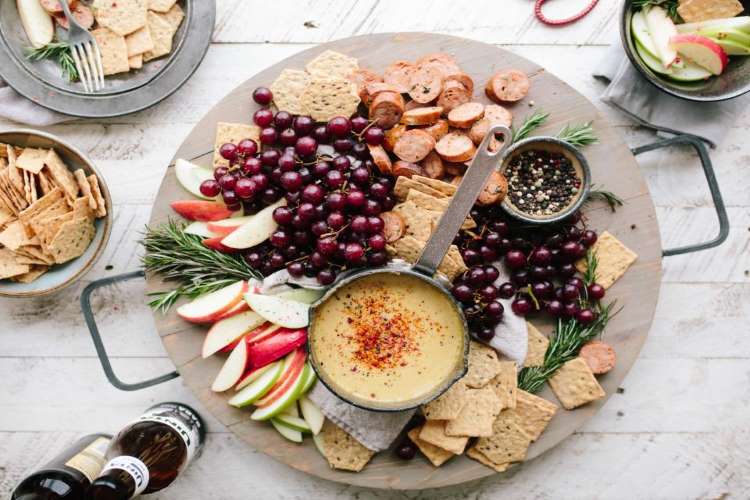Traditionally vocabulary has always been perceived as the number of words you can understand and recollect the meaning of. Hence improving vocabulary was mostly focused on learning a new word every day.
People would often highlight unfamiliar words and find their meaning from a dictionary. It was often advised to practice the typical “word for the day” approach, where you study a new word every day along with its origin, meaning and usage.
The big question here is, do you remember any of those highlighted words you came across all this while? Can you recall even 5 new words you learned in the last 5 months? I don’t think so!
If Word Power is Not Vocabulary Then What Is?
Both teachers and students worldwide often forget to differentiate between word-power and active vocabulary. Real vocabulary is the words that you can recall effortlessly and spontaneously while having a conversation. And if you truly want to gain fluency, then active vocabulary is what you must target to practice and improve most.
Also Read: How to Improve English Writing? 8 Efficient Ways to Improve Writing Skills
Improving Active Vocabulary
To improve active vocabulary you need to change your approach from words to scenarios, settings and context. Every scenario or context has a set of words, phrases and idioms which are used more often than others. Here is a brief list of such scenarios:-
Talking about food
Talking about people and culture
Talking about places
Talking about films
Discussing music
Talking about politics
Talking about cricket (or other sports)
The vocabulary of experiences (good, bad)
Vocabulary of Socialising
The vocabulary of business networking
Talking about health and fitness
To improve your active vocabulary, you must target a particular scenario and extensively expose yourself to relevant reading material. Once you have read articles or written pieces, you must try to write a small piece of your own. I have tried to organise this approach into 4 steps.
Steps to Practice Scenario Based Vocabulary for Food
Step 1
Chose a scenario or setting which you think you might realistically encounter in your social life, for example, “talking about food”
Step 2
Find reading sources and material where you can read or listen to food. The best sources for food would be Food and travel shows, restaurant review and rating sites like zomato, food blogs or podcasts. Here is a list that I could compile
Zomato
Masterchef Australia and similar television programs
Food and Restaurant sections of Top Newspapers like Times of India, Mid-day etc
Step 3
Once you read or listen to all your sources, make an exhaustive list of words that you come across. Here is the list I could compile
Flavour
Aroma
Spices
Taste buds
Fragrance
Curry
Tangy
Smokey
Crispy
Crunchy
Saucy
Melting hot
Steaming hot
Piping hot
Deep fry
Masala
Taste
Culinary
Gastronomy
food capital
Ambience
Traditional
Produce
Delicious
Preparation
Recipe
Texture
Melt-in-the-mouth
Affordable
Restaurant
Takeaway
Kiosk
Fine-dine
Note: Even if you know the meaning of half of the words, you need to learn the usage. Hence keep the list as exhaustive of scenario-specific words as much possible, no matter how simple or complex they may appear. For instance, a simple word like “texture” is included in the list because it has a completely different meaning when used in describing food.
Also Read: Top 10 Online English Speaking Courses: Let’s Learn English for Future Opportunities!
Step 4
Write your own piece using as many words as needed from the list you have curated. Do not try to stuff words in there. If you are not satisfied with one piece, try another.
To help you out, let us give a problem statement that you can attempt –
Describe a unique food experience from your hometown
Introduction
You can submit your answers to me if you want a discussion or want them evaluated. Here comes my answer to this question. I will highlight the words used from the list above
The midnight food market of Sarafa Bazaar, Indore
Indore, which in many ways is both the cultural and commercial capital of Madhya Pradesh, is also known to be the food capital of central India and it stands true to this claim in my opinion. One of the most unique food experiences that Indore offers is the midnight food market of Sarafa Bazaar.
Body
Behind the old city palace, which was once ruled by the Holkars, is a maze of small lanes and by-lanes connecting the jewellery and the cloth market, housing shops in the daytime, but come evening, their shutters go down, and on their Verandahs pop up the vintage food shops. When you walk down the street, you see small kiosks and thelas offering Jalebis, GulabJamun, Dahi-Vada, Chole Tikki, Sabudane ki khichdi, Badundi, Bhutte ka kis etc.
One of the most interesting offerings would be Garadu which also goes by the name Ratalu. Garadu is a foot long root that is chopped into small cubes for preparation.
Wrap-Up
They are then deep-fried and served, garnished with lime, the secret masala and Aamchur. The Garadu which is hot and crispy from the outside is soft and steamy once you bite it. The tangy aftertaste of Amchur stimulates a craving in you to pop in another cube. You’re constantly at the risk of burning your mouth, but your taste buds tell you otherwise. A local favourite in the winter, Garadu is easily the most unique and delicious offering of Sarafa Bazaar.
British Food Vocabulary
Aside from Yorkshire pudding, gravy, and cauliflower cheese, a Sunday roast can be served.
afternoon tea (noun): a light afternoon meal of tea with finger cakes, sandwiches, or scones.
People adore mash and bangers(noun): a British meal consisting of onions in gravy, mashed potatoes, sausages, and green peas.
black pudding (noun): a sliced and fried sausage made of pork blood, pork fat, and oatmeal – Is black pudding part of your full breakfast?
Also Read: Number in English Grammar: Check Out the Types, Rules, and Examples of Numbers in Grammar!
Some More
Butter and Bread pudding (noun): a baked dessert made with stale bread, raisins, and custard – We made a bread and butter pudding with all of the old bread.
The British Isles (noun) are the islands of Ireland, Great Britain, and over 6,000 other smaller islands, including the Republic of Ireland and the United Kingdom.
People reheat the leftover cauliflower cheese (noun): a baked savoury dish made with cheese and cauliflower sauce.
Devonshire tea (also known as “Cornish cream tea”) (noun): afternoon tea with fresh clotted cream, baked scones, and jam – We had Devonshire tea in a small teahouse in the gardens.
Chinese Food Vocabulary
Chinese appetisers such as spring rolls and snacks such as dim sum have become well-known and widely consumed all over the world. Other Chinese foods are well-known not because they are widely consumed, but because they are unfamiliar to non-Chinese people.
Bird’s-nest soup, made from the saliva of certain birds, hundred-year eggs, which turn a dark grey or greenish colour when preserved, traditional mooncakes, which are only baked during the mid-autumn full-moon festival, and shark fin soup, which many people believe is unethical to eat due to a large number of sharks killed each year for their fins, are just a few examples.
French Food Vocabulary
The majority of French people start their day with a light breakfast of French bread or croissants with honey or jam, as well as tea or coffee. For a heartier breakfast, they might order bread with ham and cheese or pâté, a savoury paste, or a Croque Monsieur, a grilled ham and cheese sandwich.
Breakfast is typically a small meal, whereas lunch and dinner are much larger meals that can last up to two hours. Both usually consist of three courses served with wine and cheese, as well as tea or coffee. An entrée of savoury foods or soup, a main course of vegetable and meat dishes, and pastries or dessert are the three courses.
Also Read: Vocabulary for Nouns: Types of Nouns with Examples and Word List A to Z
Indian Food Vocabulary
Many people associate Indian cuisine with curries and rice. But Indian cuisine is much more vast than that. There are dozens of different regional Indian cuisines, each with unique dishes. Indian cuisine is frequently divided into two main types to make it easier to understand: South Indian and North Indian.
They use a variety of cooking techniques, ingredients, and even spices in many cases. Wheat-flour flatbreads, for example, are popular in the north, whereas rice is more popular in the south.
This is due to the fact that North Indian cuisine was heavily influenced by Middle Eastern cuisines of the Islamic Mughal Empire, which featured flatbreads as a staple food, whereas South Indian cooking is more akin to traditional and conventional Hindu cuisine of ancient India, which had rice as a staple food.
Italian Food Vocabulary
Italian cuisine has risen to prominence as one of the world’s most popular national cuisines. Famous Italian dishes like macaroni and spaghetti are now cooked in home kitchens all over the world, and Italian restaurants can now be found in nearly all of the world’s major cities. Pizza, especially the kind sold in takeaway pizza restaurants all over the world, is the most famous Italian dish of all.
Many of the world’s most popular home-cooked meal recipes originate in Italy, particularly those for various types of pasta. Spaghetti, fettuccine, and macaroni are among the most popular pasta, and home-cooked dishes such as spaghetti Bolognese, macaroni and cheese, and fettuccine Alfredo are popular not only because they’re only delicious, but also because they’re simple to prepare.
Conclusion
Hopefully, the above article helped you learn about foods. Talking about food is an excellent way to start a lively discussion. This type of conversation is sure to put a smile on your face, especially if you enjoy anything that has to do with food.
However, as with any descriptive topic, discussing your favourite food necessitates some technicalities. After you’ve checked all of these boxes, you can talk about the type of food you really enjoy!
You also have the choice to download the Fluent Life app on your mobile phone for customized personal lectures where you get instant feedback on your performance and can resolve all your queries.
Also Read: How to Talk About the Food You Like? List of Food Vocabulary Words






